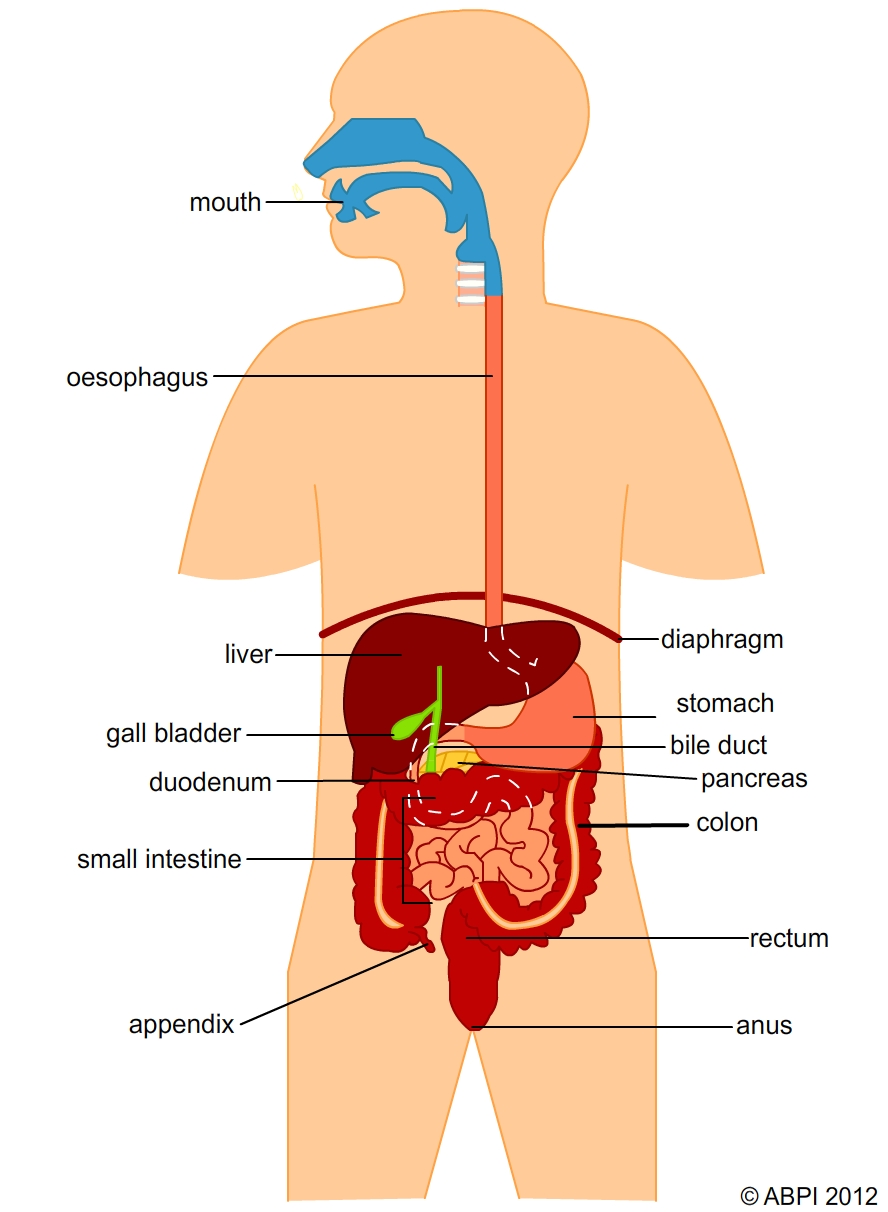This topic takes on average 55 minutes to read.
There are a number of interactive features in this resource:
 Human biology
Human biology
 Biology
Biology
 Physical education
Physical education
 PSHE / Citizenship studies
PSHE / Citizenship studies
The digestive system is a good example of many organs working together to carry out an important body function.
The process of digestion starts at the mouth. The food is broken down by both physical and chemical digestion through the mouth, stomach, duodenum and ileum. In the ileum, most of the food has been broken down into small soluble molecules. These move from your small intestine into your bloodstream by diffusion, which takes place down a steep concentration gradient. The concentration of glucose, amino acids, fatty acids and glycerol in the small intestine is much, much higher than the concentration in the blood. The villi of the small intestine provide a very large surface area where this diffusion can take.
Water is removed from the mixture of undigested food, enzymes and dead cells which remains as it passes through the colon. The waste material known as faeces is finally passed out of the body through the anus.

The human digestive system
The following animation illustrates how the absorption of different nutrients, such as glucose, fatty acids, glycerol or amino acids, take place during digestion. Absorption is a key process of digestion, as it is the phase in which our body obtains the nutrients from the food and distributes them wherever they are needed.
Inside your digestive system, along with the enzymes, acid, bile, alkali, digested and undigested food there are trillions of bacteria - around 1013 of them, with a mass of about 1.5 kg! Many of these bacteria are very good for you but some of them can cause problems.
A healthy colony of bacteria in your digestive system seems to improve the health of your gut. Can you improve the balance of healthy bacteria and so improve the health of your digestive system?
To assess your knowledge, have a go with the quick 3-question quiz below. To try again, click on the "Back to start" button.